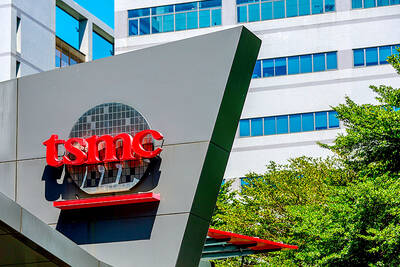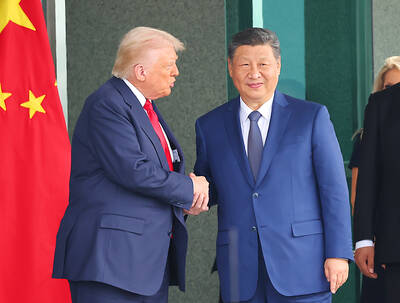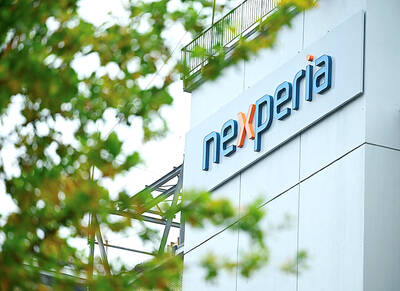Focus Media Holding Ltd (分眾傳媒), a Chinese advertising company targeted by short-seller Carson Block, received a bid from private-equity firms, including Carlyle Group LP, in what would be the country’s largest leveraged buyout.
The bidders made a “non-binding” offer of US$27 for each American depositary receipts (ADR), the Shanghai-based company said on Monday in a statement. The offer is 15 percent more than Focus’ closing price on Friday and above the level when Block’s Muddy Waters LLC began targeting it in November.
The bidders, which include Citic Capital Partners (中信資本) and Focus Media chief executive officer Jason Nanchun Jiang (江南春), made the proposal that values the company at US$3.5 billion. A successful deal would see the advertising group join Chinese companies such as Fushi Copperweld Inc (傅氏國際) and Winner Medical Group Inc (穩健醫療) in backing moves to go private after short sellers raised accounting and corporate governance concerns.
The offer “is another example of how Chinese are taking more and more of their companies private,” Sachin Shah, a Jersey City, New Jersey-based special-situations and merger-arbitrage strategist at Tullett Prebon PLC, said by telephone. “The US market isn’t properly valuing them and doesn’t know if the offer price is right, allowing the management of the companies to possibly win in getting the assets at lower valuations.”
Focus Media’s ADR climbed 8.9 percent to US$25.45 on Monday after jumping 7.6 percent on Friday. The company has about 129.3 million ADRs outstanding.
Focus Media’s bullish options trading jumped to the highest level since November on Friday. More than 29,000 calls to buy the stock changed hands, five times the four-week average, compared with 7,635 for puts to sell.
Focus Media traded at US$25.50 on Nov. 18. last year, before Muddy Waters recommended betting against the stock. The stock plunged as much as 66 percent the next trading day after Block’s firm issued a strong sell recommendation. Muddy Waters in February issued a fifth report that said Focus Media overstated its ad network.
In addition to Citic Capital and Washington-based Carlyle, the bidders for Focus Media include FountainVest Partners (方源資本), CDH Investments (鼎暉投資) and China Everbright Ltd (光大控股), the company said in the statement. Jiang is Focus Media’s biggest shareholder with a stake of about 18 percent, according to data compiled by Bloomberg.
“Focus Media is very dominant in the public-display advertising space in China and has geographically diversified itself throughout China’s big cities,” said Timothy Ghriskey, chief investment officer of Solaris Group LLC, a New York-based firm that sold its stake in the company a year ago. “The PE [private-equity] firms are seeing a bargain here.”
“The company’s board of directors has formed a committee of independent directors to consider the proposed transaction,” Focus Media said in the statement.
The investor group plans to use a combination of debt and equity to finance the purchase.

RUN IT BACK: A succesful first project working with hyperscalers to design chips encouraged MediaTek to start a second project, aiming to hit stride in 2028 MediaTek Inc (聯發科), the world’s biggest smartphone chip supplier, yesterday said it is engaging a second hyperscaler to help design artificial intelligence (AI) accelerators used in data centers following a similar project expected to generate revenue streams soon. The first AI accelerator project is to bring in US$1 billion revenue next year and several billion US dollars more in 2027, MediaTek chief executive officer Rick Tsai (蔡力行) told a virtual investor conference yesterday. The second AI accelerator project is expected to contribute to revenue beginning in 2028, Tsai said. MediaTek yesterday raised its revenue forecast for the global AI accelerator used

Taiwan Semiconductor Manufacturing Co (TSMC, 台積電) has secured three construction permits for its plan to build a state-of-the-art A14 wafer fab in Taichung, and is likely to start construction soon, the Central Taiwan Science Park Bureau said yesterday. Speaking with CNA, Wang Chun-chieh (王俊傑), deputy director general of the science park bureau, said the world’s largest contract chipmaker has received three construction permits — one to build a fab to roll out sophisticated chips, another to build a central utility plant to provide water and electricity for the facility and the other to build three office buildings. With the three permits, TSMC

TEMPORARY TRUCE: China has made concessions to ease rare earth trade controls, among others, while Washington holds fire on a 100% tariff on all Chinese goods China is effectively suspending implementation of additional export controls on rare earth metals and terminating investigations targeting US companies in the semiconductor supply chain, the White House announced. The White House on Saturday issued a fact sheet outlining some details of the trade pact agreed to earlier in the week by US President Donald Trump and Chinese President Xi Jinping (習近平) that aimed to ease tensions between the world’s two largest economies. Under the deal, China is to issue general licenses valid for exports of rare earths, gallium, germanium, antimony and graphite “for the benefit of US end users and their suppliers

Dutch chipmaker Nexperia BV’s China unit yesterday said that it had established sufficient inventories of finished goods and works-in-progress, and that its supply chain remained secure and stable after its parent halted wafer supplies. The Dutch company suspended supplies of wafers to its Chinese assembly plant a week ago, calling it “a direct consequence of the local management’s recent failure to comply with the agreed contractual payment terms,” Reuters reported on Friday last week. Its China unit called Nexperia’s suspension “unilateral” and “extremely irresponsible,” adding that the Dutch parent’s claim about contractual payment was “misleading and highly deceptive,” according to a statement